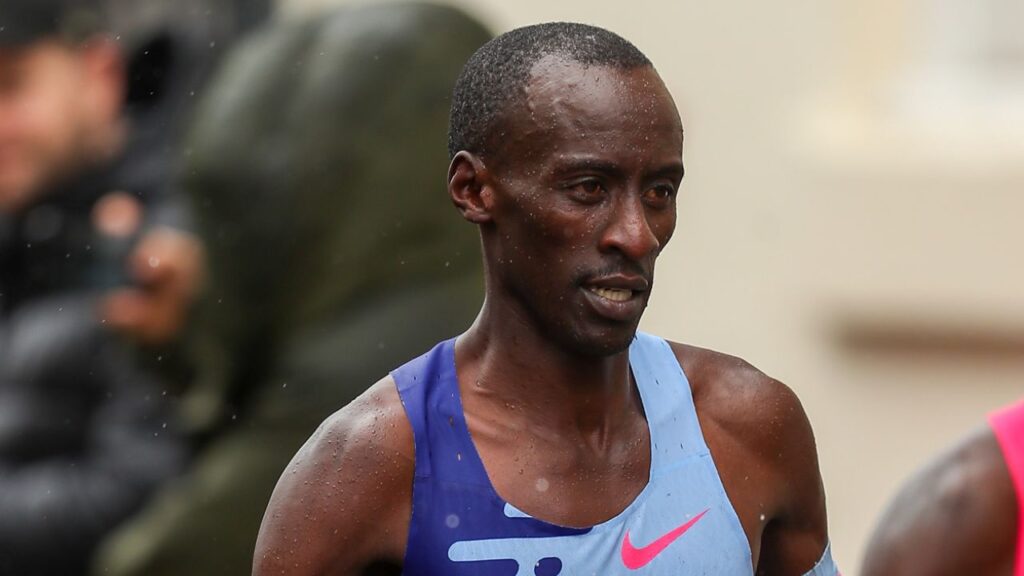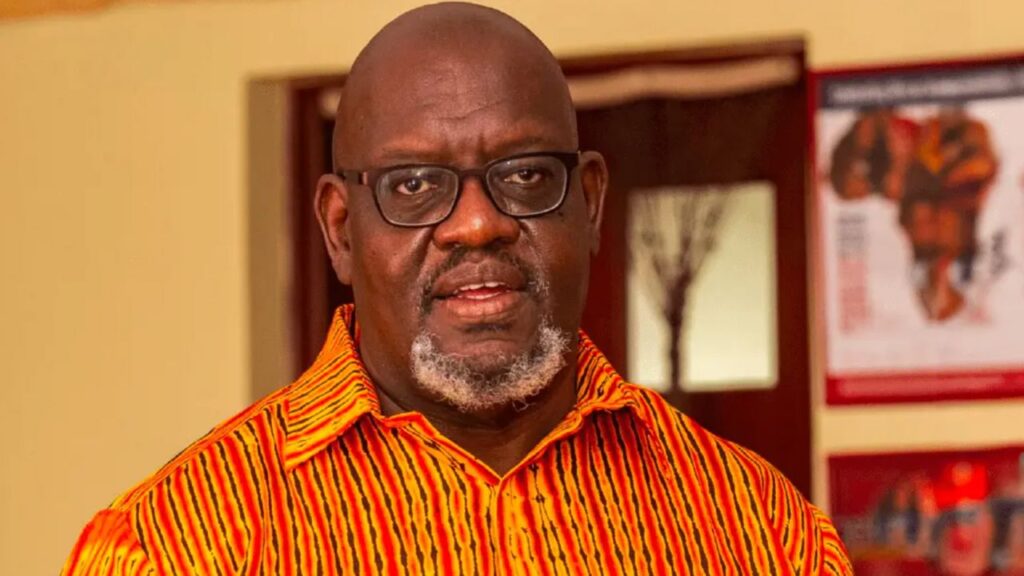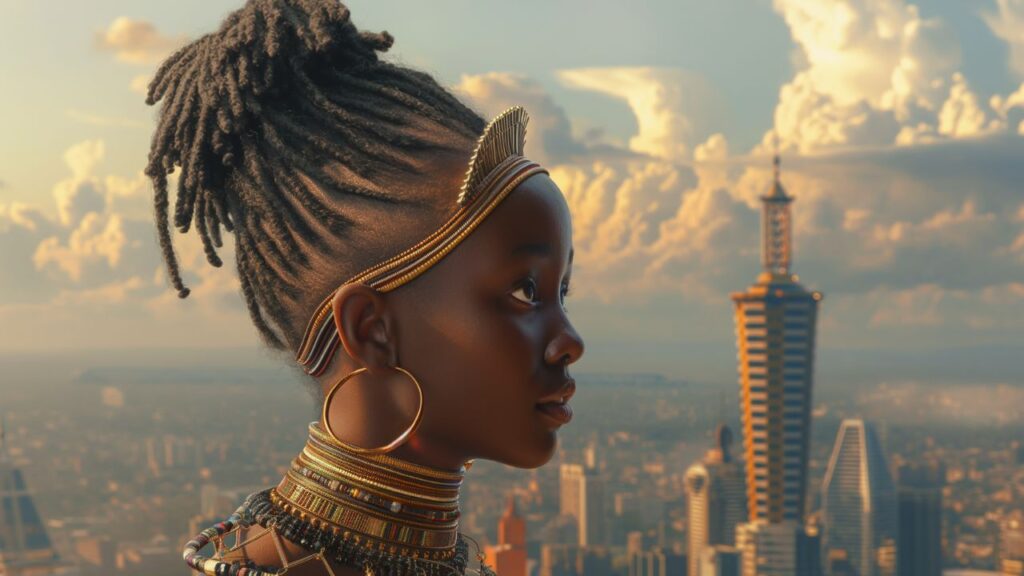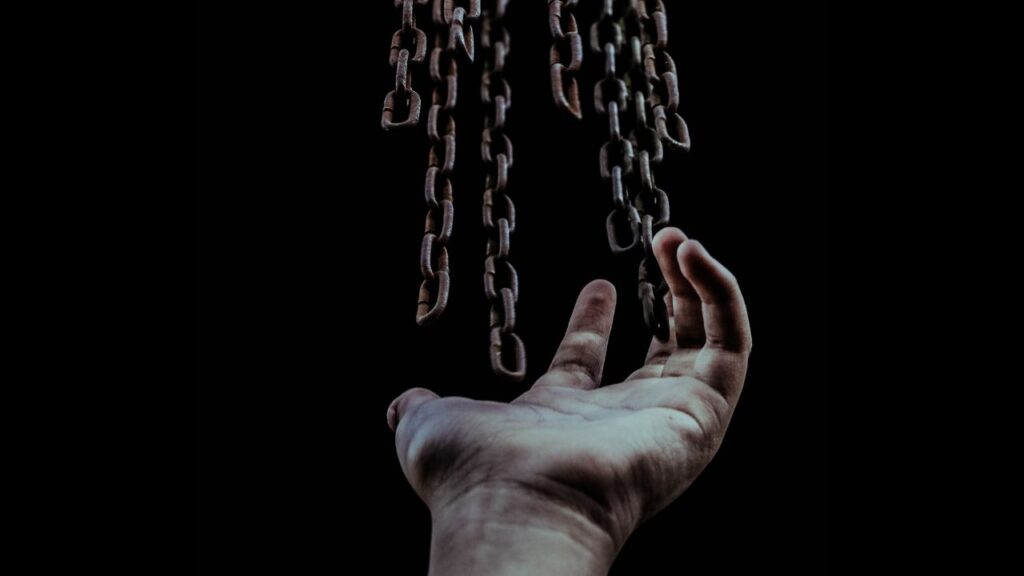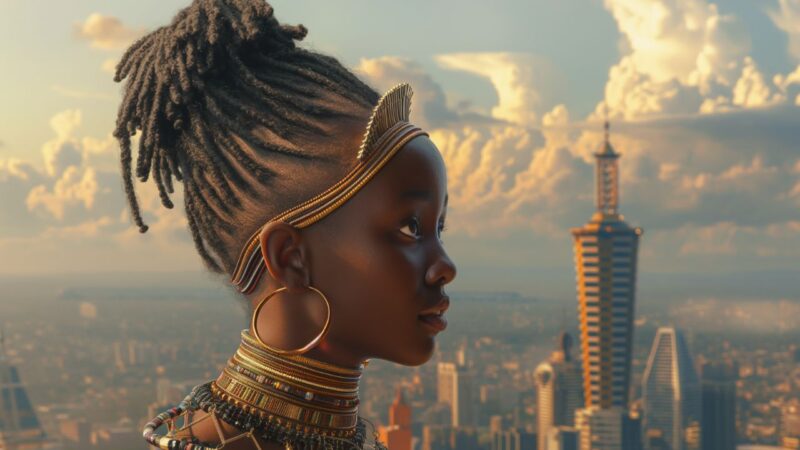Over the past few weeks, I’ve been inviting people to share photos of their mothers, grandmothers and aunties looking stylish in the fashion of the 1960s, 1970s and 1980s. The idea, which we are calling “Our Grandmother’s Miniskirt”, is simple enough, crowdsource photographs from Kenyan homes of women dressed in the style of that era; the photographs will be accompanied by reflections, essays, short stories or poems. The aim is to capture a history of ordinary people and to share this history through physical exhibitions, an online archived exhibition, and a coffee table book. I see the project as a celebration of Kenyan women and gives a snap shot of the emergence of the modern Kenyan woman.
By the time we staged the first mini-exhibition with a selection of 27 photographs submitted by people from around the country, I had come to understand that projects are not easy in that they all require planning and careful execution, even if they excite people. Getting people to send their scanned photographs from precious family albums has been challenging. The project goes into the intimate spaces of families and asks them to override their tendency towards privacy and share their lives with strangers. Of course this was always going to be a trial. It was not surprising that although the daughters or granddaughters were enthusiastic to participate in the project, their mothers and grandmothers — the subjects of the photos — sometimes refused to allow them to share these images. But I’m glad the images are trickling in.
Implementing the project over the last few months has helped me see its possibilities and expanded its scope in so many ways. Most important I am now looking for photographs before the 1960s and of Kenyan women wearing a variety of dress and hairstyles. The secret to the power of the project has furthermore revealed itself in the act of crowdsourcing. This approach has allowed people to connect and own the project, much more than if the photos were purchased from a media source.
My Childhood: 1960s and 1970s
The photographs have unleashed a collage of memories for me. I was a child in the 1960s and the 1970s watching Nairobi slowly emerge from its colonial yoke and my parents seemed to be at the centre of it all. They were amongst that group of Africans who were literally stepping into the shoes left by our colonial powers. My late father’s (William Ndala Wamalwa) career developed quickly and after only two or three years in government service, he stopped driving himself and moved to the senior government ranks.
But it was the women of that time that intrigued me most and I was watching their lives with the impatient envy of a child. I wanted to grow up and wear those cat-eye glasses and cute kitten heels, burn my hair straight, drink Babycham and laugh like they did, with a hand full of bangles held out at just the right angle. But most of all I wanted to wear those glamorous clothes that I saw women wear to parties and dinners – there seemed to be a party or dinner every other weekend! Miniskirts, bell-bottom trouser suits, halter tops, maxi dresses, stilettoes, kitten heels. I wanted to dance to the very dangerous James Brown, the elegant Supremes, the cool Fadhili William, the revolutionary Miriam Makeba, and the handsome Harry Belafonte. I thought all these musicians were my parents’ friends. Imagine my shock when I grew up enough to understand that these were distant celebrities.
Burning Hair
For African women, hair means everything. Women spend large sums of money on our hair and even more woman-hours on styling it. Braiding can take eight hours. Typically a myriad of products are used on African hair, from oils, pomades, sprays, gels, dyes, treatments, conditioners and shampoos. How seriously do African women take their hair? Well in the days when we still had plastic bag around, Kenyan women could be seen risking their reputations by wearing plastic bags on their heads in broad daylight, to stop their hair from getting wet during an unexpected downpour.
But when it comes to hair, there was a simpler time. In the early 1960s, hair straightening was not yet fashionable and chemical relaxers had not yet arrived in the country. Kenyan women still wore their natural hair and fashioned it using African hairstyle traditions that involved elaborate cornrows, braids and plaiting. Saturday was the day when hair was dressed, typically with the help of skilled friends or relatives. Hair salons were still a faraway concept and the hair industry was a rudimentary affair and not the billion shilling industry of today.
In our home, many Saturdays found Aunty Truphena dressing my mother’s hair. Aunty Truphena was not my mother’s sister. But she and my mother were closer than sisters. They came from one of the smallest of the eighteen Luyhia sub-tribes, the Abanyala ba Ndombi, who are located in Navakholo division, north of Kakamega forest, in western Kenya. At that time, not many people seemed to have made it out of my Bunyala and it was rare to meet a Mnyala in Nairobi.
Sometimes Aunty Truphena straightened my mother’s hair using a hot comb heated on a charcoal jiko. She divided the wet hai,r drenched it in liquid coconut oil, and burnt it straight with the hot comb. Next she rolled the hair onto pink rollers and pinned it down. I wondered how she had learnt to dress hair like that. Her own hair was forever hidden under the flowered scarf that she always wore.
Nigerians Come to Town
The late 1960s were marked by an influx of Nigerians who came with their loud laughter, outsized personalities and strange food. They were mostly Igbos who had fled to Kenya as refugees from the Biafran War (1967-1970), but there was nothing “refugee pathetic” about them. In fact they came and took over our live,s adding flavour and passion like I had never experienced. I remember the names of one family in particular: Chief Jerome Oputa Udoji[1], his wife Mrs. Uzoamaka Udoji (Aunty Uzo) and their three children Scholastica, Osita Paul and Peter Ebelechukwu. The photograph of my mother below was taken at that time, and it was Aunty Uzo who made me realise just how beautiful my mother was, when she loudly exclaimed that my mother looked like Miss Kenya.
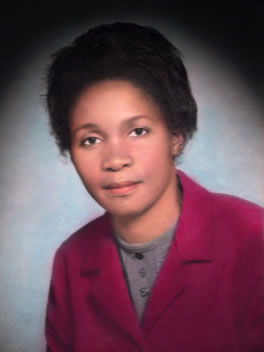
Mrs Rose Nanjala Wamalwa (Sitawa Namwalie’s mother) as an executive secretary at the Ford Foundation in Nairobi, Kenya (early 1970s). Photo Credit: Studio One.
Aunty Uzo was a force of nature. She and the other Nigerian women introduced me to a different way of being African. They were militant in taking on any vestigial racism that still had the temerity to cling on and even fight back, so soon after Kenya’s Independence. Aunty Uzo often regaled us with stories of the many battles she fought when white people dared to assert their colonial-era privilege. For us Kenyans, would so often acquiesce to everyday racism from the British, but not a Nigerian and definitely not Aunty Uzo. She fought with the priests at St. Mary’s school in Lavington where her sons were enrolled and she fought when white people tried to jump queues in banks or supermarkets and she argued with African waiters who tried to ignore her in restaurants. She was strong and assertive, always encouraging Kenyans not to be cowed by white people.
There were days when Aunty Uzo took over our kitchen and taught my mother how to cook Nigerian food, subjecting us to strange new flavours and aromas. Every so often our kitchen was overwhelmed by the strong smell of a dried fish imported direct from Nigeria which was even more pungent than our sivambala catfish dried in the hot sun of western Kenya. I learnt that Nigerians waste very little, cooking all parts of the goat,:the skin, meat, innards and hooves. The one dish that really tested my rather narrow palate as a child was a soup that combined beef, fish and chicken which Nigerians seemed to particularly love. When the war in Nigeria ended, our Nigerian friends left, leaving us changed for ever. But soon their place was taken by Ugandans fleeing the abuses of Idi Amin who began his rule in 1971, but that is a story for another day.
About the Exhibition
These photographs have triggered so many memories for me and it is my hope that they will do the same for all who see them. They document the social history of ordinary people in Kenya. I’ve learned that the past can be another country, sometimes a more interesting country than the narrow ideas that populate the present. I shared the premise of “Our Grandmother’s Miniskirt” with a young man, Basil Ibrahim who taught me the word hagiographic when he wrote the following in an email about the project;
“…a particularly interesting deviation from the hagiographic custom of The Great Men model of history-making…It is a model for bringing the archive to life, using memory, popular culture…in an experiment to provoke us to think about the implications the past has on the future we want.” (17 August 2019)
What he meant was that we tend to make saints of certain “great men” of the past (hagiography means the making of a saint), while ignoring the stories of ordinary people, who lived through those times. I hope that this project will correct that tendency towards hagiography.
When arranged chronologically, the photographs begin with one from1945 of a woman named Gatoro Ndugi M’Chabari, dressed in the traditional dress of the Tharaka ethnic community. The type of dress she wears was worn by married women. The unmarried ladies had their breasts left uncovered. The photograph was submitted by Mr Simon Mitambo, Gatoro’s nephew and shows her in what can only be described as a brief miniskirt. The photo was taken in Meru town in 1945, after entertaining the then colonial governor of Meru. In discussing her traditional dress, Gatoro Ndugi M’Chabari — who is over 90 years old — had the following to say: “Although we looked almost naked in miniskirts, there were no cases of sexual harassment.”

Gatoro Ndugi M’Chabari, from the Tharaka ethnic community. 1945, Photograph submitted by Mr Simon Mitambo.
In another story entitled, “The Village Woman and Son, Bound for England” John Sibi-Okumu pays tribute to his mother Maria Ajiambo, wa Agostino Munika nende Sarah Mbaye (the names of her parents.) She was also addressed as Naliali, her clan name from the Samia of Western Kenya. John estimates that she was born in 1936.

Maria Ajiambo wa Agostino Munika nende Sarah Mbaye, mother of John Sibi-Okumu. The photograph was taken in 1958 at Noble Studio in Nairobi when John, her first born son, was four years of age.
John’s story of his mother reveals many intriguing circumstances, first being that his mother was born on a sisal estate in Juja, Kalimoni, where his grandfather worked as a nyapara or ‘overseer.’ John notes that Tom Mboya was born in similar circumstances, showing the country had already started to change with people migrating from their homes and making new homes in different parts of the country.
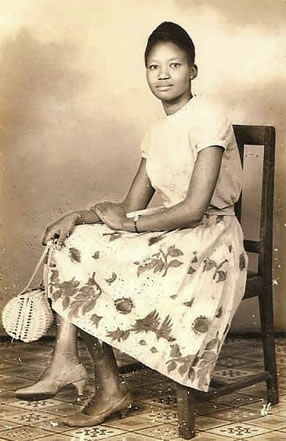
Rosalie Kere wearing a “Stiff” skirt and her “Beehive” hairstyle (1961). Photograph submitted by Caroline Kere.
Caroline Kere shared the photographs of her mother Rosalie Kere – the first photo above – who had the distinction of being a poster girl for soap called “Nakasero” and “Lux” in the early 1960s. Caroline’s tribute story to her mother has the intriguing title, “The Amazing Story of How my Father Found my Mother”. Her mother and father’s story is such an improbable romance story worthy of a blockbuster Nollywood film, that you can read for yourself at the exhibition, the online archive or in the coffee table book that is to come.
What follows is an exhibition of selected photographs.

Grace Ntini, from Narok County. The photograph was taken in Nairobi in 1969. Grace was 24 years old and worked for Avis Rent-A-Car Company. The photograph was submitted by Grace’s sister-in-law, Rosemary Mesopirr.

Rosemary Mesopirr, who was 14 years old and a primary school pupil in the rural areas of Narok County. This photograph was taken in Mombasa in 1974. This was the first time she travelled to the Kenyan coast to visit her father who was a civil servant then. It was her first time to board a bus.
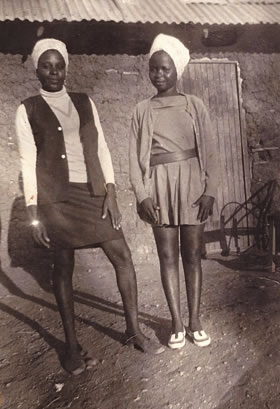
My Stylish Mother
By Doris Rutere
My mother Cecilia Kanyoe was a copy typist at Marimanti Rural Training Centre back in 1975. She was always detailed and careful in her choice of office wear. In this photograph she is wearing closed toe heels and has broken her suit with a turtleneck that matches her head gear, a chain and a wrist watch. I think they present a level of sophistication making her refined and chic. Next to her is Esther Muthoni, who was my mother’s friend. In the picture, she wears a wide belt on her cute mini-dress to create contrast while matching her head gear partly with her shoes.
Both women are quite careful in how they let their hands rest on their thighs.

Joyce Akoth, pregnant with her fifth born in 1973. This picture was taken in the early 1970s when Joyce worked as a teacher and before joining the Ministry of Public Works. The photograph of Joyce Akoth was submitted by her daughter Esther Adiambo.
***

Nancy Wanjiku Kimani , the photo was taken outside Kijabe Nursing Institute, where she was undergoing training as a nurse in Kijabe Town (1969). The photograph was submitted by her daughter Ruth Kimani.


